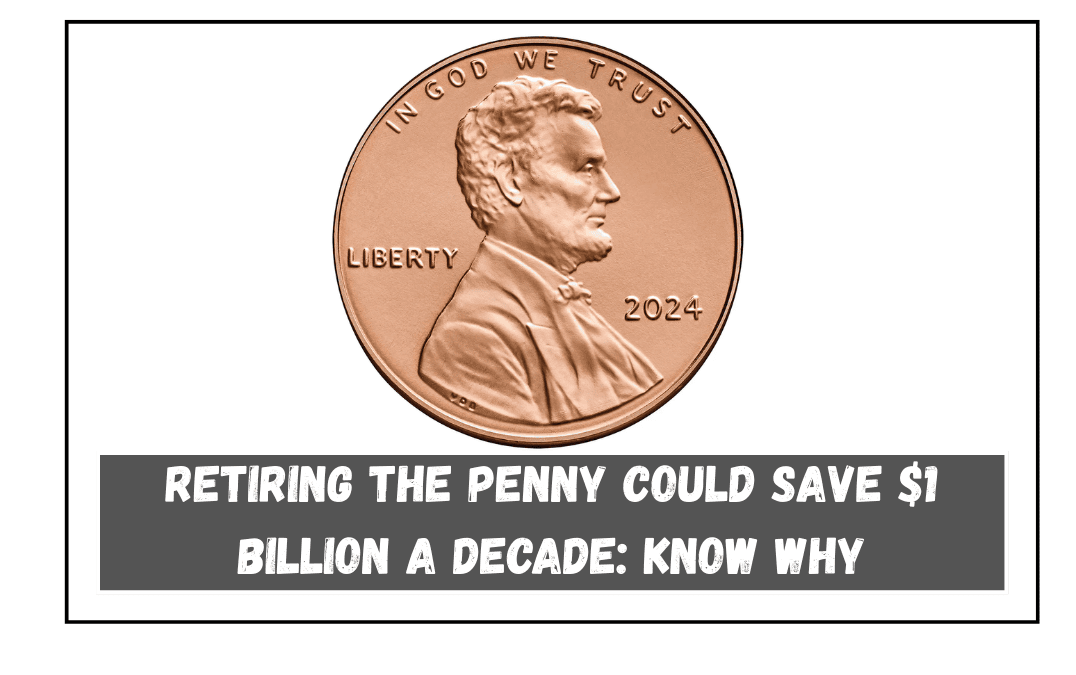America is always looking for ways to cut costs, and one surprising suggestion is getting rid of the penny. Yes, that tiny copper-coloured coin you often ignore might actually be costing the country a lot more than it’s worth. In fact, removing the penny could save the United States around $1 billion every 10 years. Let’s take a closer look at why many experts and leaders believe it’s time to say goodbye to the penny.
Why Making Pennies Costs So Much
It might be hard to believe, but each penny actually costs about three cents to produce. That’s right—creating a one-cent coin ends up costing three times its value. This includes the price of materials, like zinc and copper, along with manufacturing and distribution.
In 2023, the U.S. Mint spent over $138 million making 4.5 billion pennies. But the Mint lost around $93 million because of how expensive it is to make each coin. In 2022, the losses were even higher—over $108 million. The cost of zinc, which makes up most of the penny, has gone up sharply, making the production cost even worse.
Other Countries Have Already Done It
The U.S. isn’t the first country to face this issue. Canada stopped making pennies in 2012. Finland, the Netherlands, Sweden, Australia and New Zealand also stopped producing their lowest-value coins years ago. They have managed just fine by rounding up or down to the nearest five cents, and people have accepted it without much trouble.
America Has Retired Coins Before
The penny isn’t the only coin that has become outdated. The U.S. once had half-cent, two-cent, three-cent and even twenty-cent coins. These coins were eventually phased out because they no longer served a practical purpose. The penny might be next in line. After all, it made sense when it was first introduced in 1793, but more than 230 years later, times have changed.
The Real Reason Pennies Still Exist
If it’s so costly and impractical to keep producing pennies, why hasn’t the government stopped yet? A major reason is lobbying. One company called Artazn, based in Tennessee, makes the zinc blanks for pennies. This company has lobbied hard to keep the penny around, spending millions of dollars over the years to influence lawmakers.
There’s also a group called “Americans for Common Cents” that supports keeping the penny. However, it turns out this group is funded by the same company that profits from penny production. So, the push to keep the penny might not really be about public interest, but more about business.
Arguments for Keeping the Penny
Some people argue that the penny is a symbol of Abraham Lincoln and should be preserved. But Lincoln’s face is already on the $5 bill, so that legacy wouldn’t be lost.
Others say removing the penny could hurt charities that collect spare change. But such donation drives have become less popular, especially as more people use cards and digital payments.
One concern is that getting rid of the penny could lead to higher prices through rounding. But studies and real-world examples from countries like Canada show this isn’t a big issue. Also, only about 18% of purchases are made with cash in the U.S., so most transactions wouldn’t be affected at all.
Would Ending the Penny Hurt Collectors?
Some collectors might be upset, but many believe retiring the penny could actually increase its value for collectors. Especially the pre-1982 copper pennies, which are more valuable and better for artistic coin stretching, a hobby enjoyed by many collectors.
Is It Time to Let Go of the Penny?
It’s clear that the penny is outdated, costly and largely unnecessary in today’s economy. While some may have emotional or nostalgic reasons to keep it, the facts show that retiring the penny could save the country around $100 million every year.
With strong arguments from both Republican and Democratic leaders, along with experts and former Mint directors, the movement to eliminate the penny is growing stronger. The main roadblock seems to be the political influence of companies that profit from keeping the penny in circulation.
Maybe it’s time to stop pinching pennies and start saving dollars.
The penny, once a vital part of daily life in America, now seems more like an expensive habit than a helpful coin. With rising costs and very little use in modern society, ending penny production could save taxpayers billions over time. Other countries have made the change smoothly, and the U.S. could too. By letting go of the penny, we could focus on smarter, more efficient ways of handling money.








